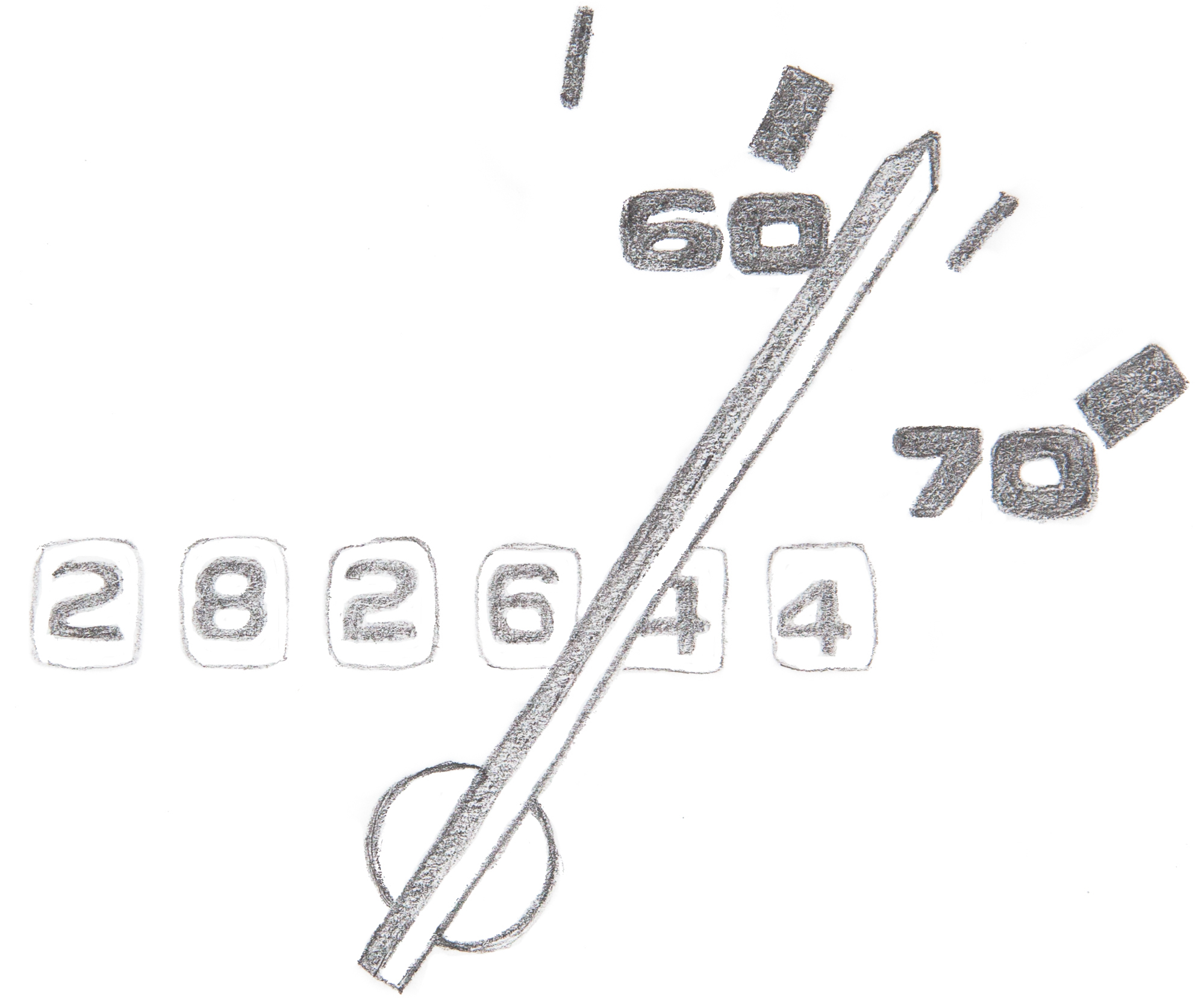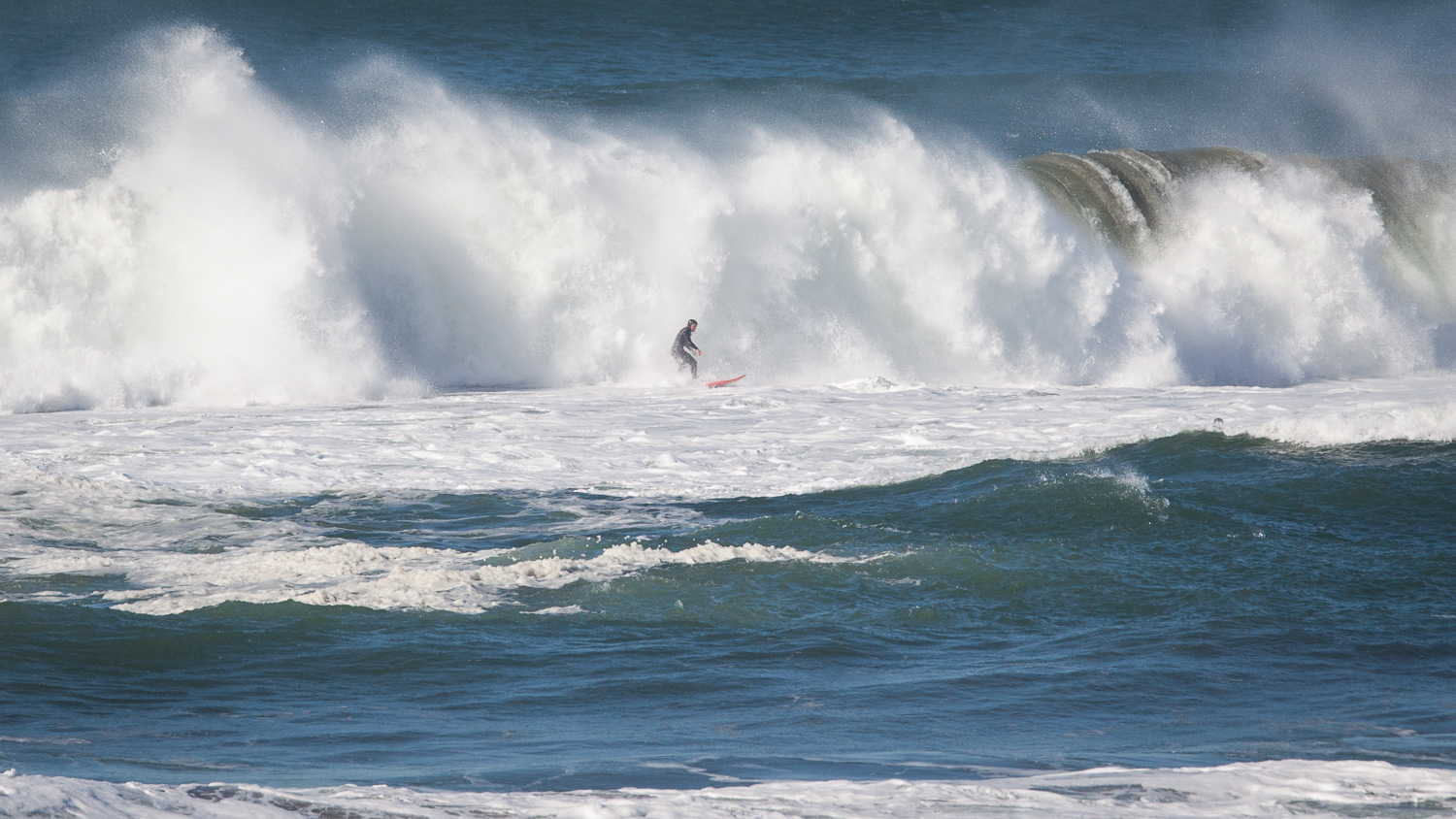Surfing Freight Trains

"How are you feeling after that?" I asked.
"My body is fine, I'm just super bummed," Keenan said. "I've been waiting for this day since December 24th, 2011, and I want to be out there with those guys."
I looked down at his brand new gun, a surfboard long enough and fast enough to catch and ride the biggest waves, its individual fiberglass strands splayed open… the ocean dealt its 9'8" lipstick-red body a clean chop. The whomp whomp whomp whomp of the Coast Guard chopper renewed my senses – big wave surfing was still going off at San Francisco's Ocean Beach.
OB, as it's known to locals, is one of those rare places on earth where one of Nature's greatest achievements – the ocean and its fury – slams directly into one of Man's greatest achievements – the city and its fury. A few times a year, some of the world's largest waves crash here, while city residents sip lattes and PBR on its shore.
I was following a group of friends whose mouths run when the words big wave are uttered. After we swam together in college, these guys picked up surfboards and I picked up skis, each of us seeking new means to satisfy our physical calling. I wasn't a regular member of their ocean crew, but I was a regular listener to their ocean stories. It was time to join them and save a small piece of what some called the best swell in 20 years.
I dubbed this crew the Amateur-Pros, a name that gathered little excitement, not even a single smile; they just continued waxing their boards. The A-Ps get one, maybe two chances a year to surf big waves. They can't afford the time to chase waves around the world because they're chasing careers. So, with little practice but plenty of intensity, they throw themselves down 20-30 foot waves the height of suburban homes, the type of waves that snap boards and necks with a startling indifference. These guys paddle with the pros who are surfing Mavericks for pay, but here it's the A-Ps who are paying – with broken boards and broken bodies. They exude an obsessive spirit and quietly acknowledge the risks, then dive into the 50-degree whitewater and push through the break.
"Holy shit, the waves are freight trains today," Sam said.
"What does that mean?" I asked.
"It means they're moving fast and will smash you like a freight train," he said.
"Oh."
"So once you guys paddle out, do you know what's happening to the other guys?" I asked.
"No, it's chaos," Sam said. "When you're on the outside of the break (the open ocean), you have no idea what's happening on the inside (the crashing whitewater). And when you're on the inside, you have no idea what's happening on the outside – you're taking 20-footers on the head, being held under water for up to a minute, and hoping for a opportunity to get back out. Sometimes that battle lasts half an hour."
"Jesus... so you didn't know Chris got out early and Keenan broke his board on the second wave?" I asked.
"No," he said. "I had no idea what happened to them 'til I came in."
Sam's words surprised me – despite being out there together, each surfer was very much alone. It seemed, in photographing from the safety of the bluff, I was the only one with a perspective on the individual stories developing in the water – the massive wave that knocked Chris out early, the ten-wave set Keenan endured to paddle back out, the bit of luck that contributed to Sam's epic session.
Even though each was alone and their pursuits looked different, they were each living a similar narrative, a narrative that will always exist for those who seek it, no matter how safe we insist our society becomes. Each of them was stubbornly existing at the slippery edge of their own existence – the spot reserved for the crazy ones. They were hoping to reach, if only for a second, the place where the perfection of Human output – a full exercising of the body and the mind – matches the perfection of Nature's output. The place where the purest connection to oneself and to the earth exist together.










